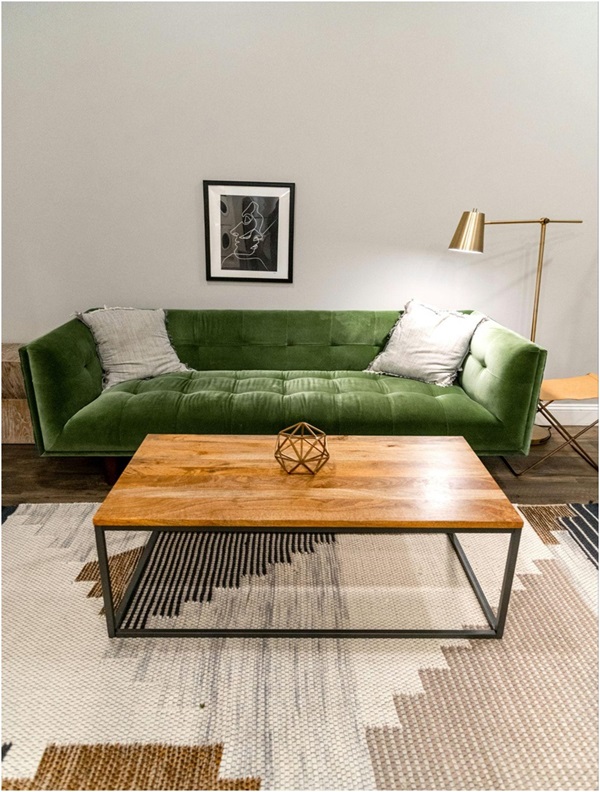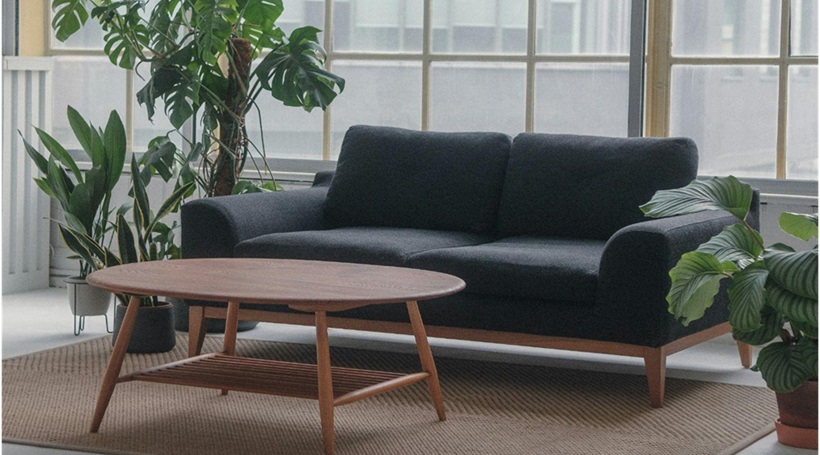Last Updated on January 1, 2025
Have you ever walked into a room and felt something was off, but couldn’t quite pinpoint what it was? That uneasy feeling might be due to the size of the coffee table. Believe it or not, the dimensions of this central piece of furniture play a crucial role in how we perceive the space around it.
In this blog, we’ll dive into the fascinating science behind spatial perception and explore how the size of a coffee table can dramatically impact the feel of a room. We’ll examine the effects of both large and small coffee tables on room ambiance and provide practical tips for selecting the perfect size to enhance your living space.
The Science of Spatial Perception

Understanding how humans perceive space is crucial for creating a well-balanced living environment. Our perception of space is influenced by several factors, including the arrangement of furniture, lighting, and even the colors used in a room. When it comes to coffee tables, their size can significantly impact how we feel in a space.
Psychology of Space: Our brains process spatial information in complex ways, taking cues from the objects around us to form a sense of the environment. Elements like furniture placement, room dimensions, and object proportions all contribute to how spacious or cramped a room feels. A well-chosen coffee table can either enhance the sense of openness or contribute to a cluttered atmosphere.
Visual Weight: The concept of visual weight refers to the perceived heaviness or lightness of an object based on its size, color, texture, and placement. A large coffee table typically carries more visual weight, making it a dominant feature in the room. This can ground the space, providing a focal point and creating a sense of stability. Conversely, a smaller table has less visual weight, allowing other elements to stand out and making the room feel more open.
Proportion and Scale: These two principles are fundamental in interior design. Proportion refers to the relationship between elements within a space, while scale relates to the size of objects in comparison to the room and other furnishings. Ensuring that your coffee table is proportionate to your seating arrangement and appropriately scaled to the room’s dimensions is essential. A disproportionate coffee table can disrupt the harmony of the space, making it feel unbalanced and awkward.
By understanding these concepts, you can make informed decisions about the size of your coffee table and how it will affect the overall perception of your living space.
Large Coffee Tables
Cozy and Inviting: Larger coffee tables can transform a room, creating a cozy and intimate atmosphere. They provide ample surface area for books, decorations, and even snacks, making the space feel lived-in and inviting. When you gather around a sizable coffee table, it encourages conversation and interaction, enhancing the overall warmth and comfort of the room.
Anchor Points: A large coffee table can act as a central anchor, grounding the entire furniture arrangement. It serves as a focal point that draws the eye and provides a sense of stability. This anchoring effect can tie together disparate pieces of furniture, creating a harmonious and balanced look in the room.
Considerations: However, there are some downsides to consider. In smaller rooms, a large coffee table can easily become overwhelming, dominating the space and making it feel cramped. It can also restrict movement, creating obstacles in the flow of the room. Therefore, it’s important to ensure that the coffee table’s size is appropriate for the room’s dimensions and layout. Balancing size with functionality is key to maintaining both aesthetics and practicality.
Small Coffee Tables
Openness and Space: Small coffee tables can instantly make a room feel more open and airy. Their compact size creates a sense of space, preventing the room from feeling cluttered. This openness can be especially beneficial in smaller living areas, where every inch counts.
Flexibility and Mobility: One of the key advantages of smaller coffee tables is their flexibility. They can be easily moved or adjusted to suit different needs and occasions. Whether you’re rearranging the room for a gathering or simply cleaning, their lightweight nature makes them highly versatile. This mobility allows you to experiment with different layouts and configurations without much effort.
Considerations: Despite these benefits, there are some potential drawbacks to keep in mind. Smaller coffee tables may offer insufficient surface area for practical use, limiting the space available for placing drinks, books, or decorative items. In larger rooms, they might also seem out of place, failing to fill the space adequately and making the room feel empty. To balance aesthetics and functionality, it’s important to consider the overall dimensions and purpose of your space when selecting a small coffee table.
Tips for Choosing the Right Coffee Table Size
Room Dimensions: Start by measuring your room to determine the ideal coffee table size. Ensure that the table is proportionate to the space, leaving enough room for movement. A good rule of thumb is to maintain about 16 to 18 inches of space between the coffee table and surrounding seating. This allows for easy access while keeping the area comfortable and functional.
Functionality Needs: Think about how you plan to use your coffee table. Are you looking for a place to rest your feet, display decor, or serve snacks? Your lifestyle will dictate the best size and features. For example, if you frequently host guests, a larger table with ample surface area might be necessary. Conversely, if you prefer a minimalist look, a smaller, more streamlined table could be the perfect fit.
Balance and Harmony: Achieving a balanced look is crucial. Consider the size of your other furniture pieces when selecting a coffee table. A large sofa paired with a tiny table can feel mismatched, while a small loveseat with an oversized table can overwhelm the space. Aim for harmony by choosing a table that complements the scale of your other furnishings. This balance will create a cohesive and aesthetically pleasing room. By following these tips, you can choose a coffee table that enhances both the functionality and visual appeal of your living space.

